

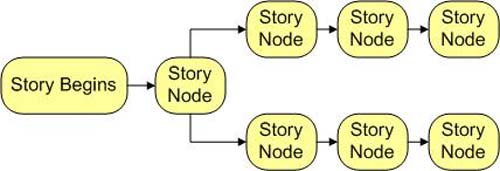

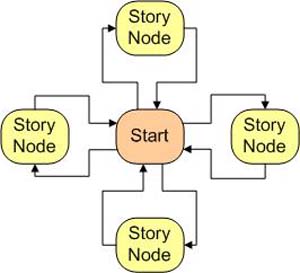

Non-linear stories consist of a graph of multiple story "nodes". Each node is connected to one or more other nodes. These connections indicate the possible directions the storyline might take once the action of the given node is complete. The story this moves from one node to the next, choosing branches either at random or based on some sort of devision system.
The following diagrams illustrate a non-linear story graph. The diagram on the right highlights one possible path through the story graph (i.e. a possible story based on the linear ordering of some of the story nodes).

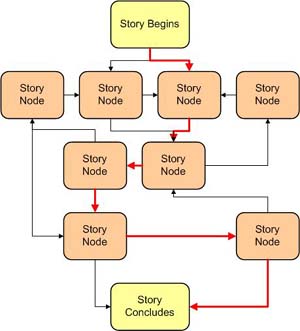
Now that we have presented a possible non-linear story graph, let us consider the possibility that the guest (or user or reader) has the ability to enter this story graph at any point. This would effectively allow the guest to enter mid-story at some point on the story's timeline.
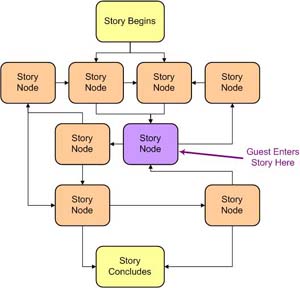

The guest may or may not have the ability to affect the direction of the story, but this structure definitely offers exciting possiblities. For example, a non-linear storyline could be generated seemingly at random. This could effectively yield a new story every time (based on the number of story nodes in the graph, of course). Now, consider placing the guest at a random point on that storyline. From the guest's perspective, this doubles the number of possible stories (based on the guest's point of view).
This could be taken another step further by considering multiple storylines across a graph of story nodes. The guest could then be placed on any node in the graph. Giving the guest freedom of movement could allow them to experience multiple storylines concurrently.
I discovered the idea for the story field structure while browsing David Miller's Non-linear story blog. To quote David:
The main element of this approach would be the non-linear nature of the story. ... Instead of starting a gamer at the "starting" place for the story, however, (like a murder, etc.) they would be started at some random point within the matrix of the story field. They would then be directed non-linearly through the story field, from clue to clue. The point of the game would revolve around the story as much as it would around finding the next clue.
I've borrowed David's diagrams to help illustrate this structure.



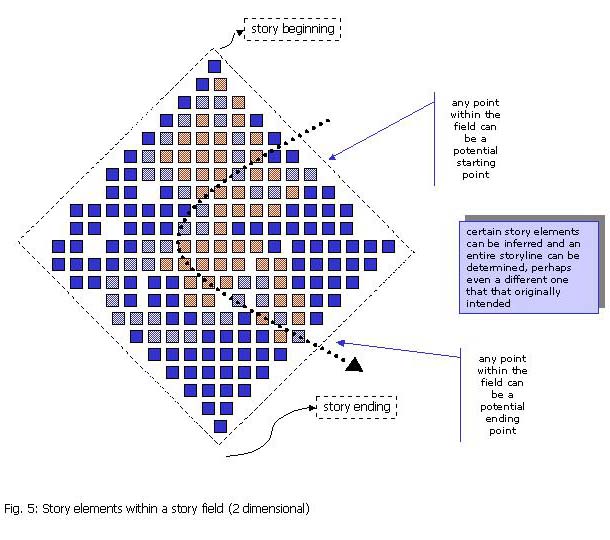
Note that the story field is not confined to two dimensional space, as might be inferred based on the above illustrations. There is not reason why the story field could not be constructed and browsed in multiple dimensionals.
In a circular story structure, each story node links to one and only one other story node, forming a circle. The guest can enter the story at any point continue around the circle of story nodes. Depending on the duration of the story, the guest may loop around the circuit and encounter the same story nodes multiple times. The progression of the story always takes the same course (i.e. the story nodes are always visited in the same order).


A variation of the circular structure adds an additional story node in the center of the circule. Some or all of the peripheral story nodes may link to this center node, which in turn links to other peripheral nodes. This gives the story the ability to "skip" some sequences of story nodes while retaining the notion of a constant progression around the circle.

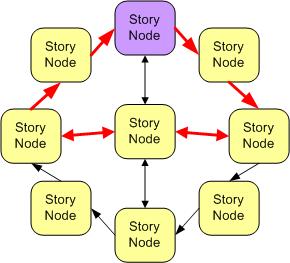
| Jon Parise <jparise@cmu.edu> | Last modified: Wednesday, 20-Mar-2002 00:23:06 EST |